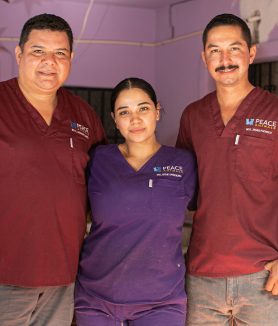If the time has come for your retirement or you are close to it and you are overwhelmed with the options that you have on the table, here we leave you the world’s top ten based on the International Living Retirement Index. The index is based on the following categories: housing, healthcare, government, opportunity, cost of living, weather, entertainment, visas and residency, development, and benefits and discounts.
Taking these categories into account, the decision about one place or another will then depend on your tastes and preferences; cosmopolitan city or the calm of a village, living by the sea or a peaceful mountain life. Here we leave everything to make it very easy for you to make the decision

URUGUAY
Uruguay is the ideal country to live in retirement, as it has a quiet lifestyle that comes from the beauty of nature, as well as the movement of cities that offer parks, good restaurants, bars, especially the cosmopolitan capital Montevideo.
English-speaking residents are usually found in communities such as Punta del Este, where the services offered are in their language, and thus do not encounter the language barrier.
Regarding the cost of living, Uruguay is an accessible country, especially for people who come from the United States, Canada or Europe. A two-bedroom apartment in Montevideo costs an average of €600, to which we must add another €100-150 in utility and community expenses. Therefore, a retired couple with a joint pension of around €2,000 can live in total comfort, counting on expenses for health care, transport, food and leisure.
When it comes to healthcare, Uruguay offers quite affordable health mutuals in its private hospitals, which is a good solution for long-term residents in the country; its average price is around €50 per month and includes visits to general practitioners, emergency rooms, surgery and discounts on medication.
 SPAIN
SPAIN
It is no surprise that Spain is in the top 10. This incredible country not only has a great climate, which includes 300 days of sunshine a year, but it also has one of the best welfare states in the world. Not to mention the gastronomy, which can be presumed to be liked by everyone.
Spain also has one of the best cultural offers: the thousands of valuable museums in almost every city, the architectural wonders, for example in Barcelona, the tablaos in Andalusia and much more. Spain is a cultural mosaic that wherever you go you will always find yourself discovering something new and completely different.
The cost of living depends a lot on the area. The quieter towns are more accessible economically and almost always in the mountains. Those who seek the warmth of the Mediterranean usually settle in Malaga, Murcia, Alicante or Almería, where with a combined pension of between €2,000 and €2,500 they can live perfectly with all the services and amenities necessary to enjoy retirement. If your desire is to live in large cities like Madrid or Barcelona, the cost of living increases, but most retirees just want to get away from the hustle and bustle of the metropolis, where it is also extremely easy to reach them in a short time due to the excellent infrastructure of transportation.
In the matter of visas, the procedures are simple: it is necessary to register as residents and meet certain requirements, namely: have full medical insurance in Spain and have enough income to subsist without receiving financial aid (this income can be a pension of another country, savings or other sources). Permanent residence is obtained after five years of legally residing in the country, absent less than six months a year (or more, due to force majeure).
 FRANCE
FRANCE
France is a country that has everything to offer, from the sunflower fields of the Dordogne River to the incredible cities of the Côte d’Azur and without leaving aside the literally movie city that is Paris.
There is the rise of the city of Montpellier, which is one of the fastest growing in the metropolitan area. It has many theaters, a multitude of restaurants, modern apartments and only half an hour from the Mediterranean coast. Other options below the line of small towns are Olmar, the fairytale city crossed by canals, or Rocammador, in the mountainous area of Occitania.
The cost of living if you move away from the Côte d’Azur and the center of Paris, is quite affordable and it is relatively easy to buy or rent properties at a good price. If the pension allows you to spend around €1,100 a month on accommodation, a total budget of around €2,300 per month will allow you to live comfortably.
The French health system is considered number one by the World Health Organization, thanks to its modern and efficient service and its costs set by the authorities, so providers cannot make the service more expensive. For nationalities outside the European Union, new residents can register in the health system after 3 months of stay (the cost is approximately 8% of income), with a cost per visit to the doctor of about 8 € per consultation.
 ECUADOR
ECUADOR
Ecuador offers a perfect combination of climate, culture and affordability… and since it is not as popular a destination as other countries in Latin America, you will be able to experience the local culture in an authentic way wherever you settle. This lack of tourism does not harm the quality of life at all: you can continue to enjoy good transport and a quality Internet connection. In fact, Ecuador uses the US dollar as legal tender, which makes it an especially attractive destination for US retirees.
Depending on the part of the country you travel to, you can enjoy a fresh ceviche on the beach, zip-lining in the Andes, rafting in the Amazon jungle, or 16th-century architecture in Quito. There are several English-speaking retirement communities in the coastal area of Salinas and in the Andean resort of Cuenca; Fortunately, as in other Latin American countries, you will have the freedom to settle wherever you want without the language barrier as an impediment.
The cost of living is relatively low. Housing prices in Ecuador are extremely affordable: you can buy a beach house for $150,000 or rent a two-bedroom apartment for about $500 (€450). A couple can live a comfortable, even luxurious, life on an income of around $1,800 a month.
For the issue of health, it is necessary to take out private medical expense insurance, in which it is estimated that a person of approximately 60 years of age would pay about 70 dollars for premium coverage. Individual visits to GPs start at $20 (€18), $40 (€36) for specialists and $30 (€27) for dental services. In any case, a more than reasonable price.
 COLOMBIA
COLOMBIA
Colombia is one of the countries with the greatest diversity, whether we talk about nature, climate or culture. In the same country you find the Amazon jungle, the Andes, beach, city or mountain.
To settle in Colombia, Medellín is the city of choice for these residents, but if you are looking for something quieter and less crowded, San Antonio de Pereria is perfect for your retirement.
The cost of living, as we have already seen, depends entirely on the area. For example, if you want to live in the luxury neighborhoods of Bogotá or Medellín, the price of a three-bedroom apartment will be around €1,115 per month. If you move away from that perimeter, the price can drop to €450. Depending on the area of the country in which you settle, with a budget of around €2,500 (housing included) you can live very comfortably.
Regarding the issue of health, it is best to take out private insurance to access greater coverage and private services.
In the visa situation, in order to reside as a retiree in Colombia, you must complete a series of administrative procedures. Pensioners can access a resident visa, with a maximum validity of five years. For this procedure you will have to deal directly with the Ministry of Foreign Affairs of Colombia.
 PORTUGAL
PORTUGAL
Portugal is a country that has everything to offer; an incredible cultural, gastronomic, architectural offer, the pleasant climate of the Mediterranean, public transport infrastructure, excellent welfare state. It has it all.
Cities like Lisbon or Porto are cultural hubs with enough museums, concert halls and trendy cafes to spend a lifetime visiting, but there are plenty of other small towns and natural enclaves just a train ride away. Some of the most striking are the Douro Valley or the rocky beaches of the Algarve.
The cost of living is relatively low compared to other Western European countries.
A couple could live comfortably in one of Lisbon’s residential neighborhoods on a budget of around €2,000, which can go down to €1,500 in one of the smaller or inland cities.
Regarding the visa, for non-European citizens, one of the most popular options is to apply for the Golden Visa, which was launched in 2012 to attract foreign residents. The requirements to request it are being of legal age, not having a criminal record and investing in a real estate property of at least €550,000. You can also apply for 120-day residence visas, for which a minimum monthly income of €972 is required; Subsequently, two two-year visas can be applied for consecutively, and permanent residence can be applied for after the five-year stay.
 MÉXICO
MÉXICO
Mexico is one of the favorite options of American retirees due to its geographical proximity, but the truth is that it is not the only one of the country’s qualities. It has good transport and energy infrastructure and a charming mix of international chains and local jewels of commerce that you will only find here. And, once again, it is a country where you will not have to worry about the language barrier.
Although it is influenced by its neighbor to the north, the country has a unique personality that is reflected in its landscapes, traditions and festivals, making it a fascinating home. Do not forget to explore the many coastal cities of the country, where you can spend idyllic afternoons between the white sand and the waters of an intense turquoise blue.
The cost of living obviously depends on the city, but a furnished two-bedroom apartment in Mexico City costs around €700, and utility bills don’t usually go above €25 each. Altogether, you can live in total comfort with €1,720 including rent, bills, food, leisure, health and transport.
For health issues, it is preferable to purchase insurance privately and consultations usually cost between 20 to 50 dollars.
To obtain a permanent residence visa for pensioners, you must complete all the documentation and requirements indicated by the Mexican Embassy.
 COSTA RICA
COSTA RICA
The natural beauty of Costa Rica is well known to all, with its small territory covered in beaches, cloud forests and coffee plantations. The country has been one of the favorite destinations for American retirees for 40 years.
The so-called “pura vida” of Costa Rica encourages people to relax, spend time outdoors and forget about the little things, although the airports of San José and Guanacaste, with their many American airlines coming and going, are small loopholes of the hustle and bustle we left behind when landing on the islands.
A single person can live on a budget of between €1,500 and €1,800 per month in the Central Valley area (where the most expensive cities, such as San José and Tamarindo, are located), while a couple enjoys a very comfortable lifestyle. with a budget of between €2,200 and €2,700 per month. This amount would include everything: housing, transport, health, bills, food and leisure.
Once you get residency, you have the option of paying a monthly fee to the public health program (between 7 and 11% of your income) or taking out private insurance. Another option is to pay for each consultation individually, which cost around €45 for a visit to a GP and €70 for a consultation with a specialist.
 PANAMÁ
PANAMÁ
Panama has reached number 1 in the American Retirement Index for eleven years, and it is not by chance. The country is perfectly located between the north and south of the American continent, three hours by plane from Miami and with an unbeatable offer of Caribbean and Pacific beaches, as well as coastal cities such as Coronado, where English-speaking retirees have established communities that do not stop growing.
Panama’s pensionista (or pensionado) visa is one of the most attractive in the world, offering hefty discounts on everything from air travel to theater performances. The foreign communities are not as established as, for example, in Costa Rica, but that, more than a drawback, is an advantage, since it allows you to experience the most authentic Panamanian lifestyle.
A retired couple can live very well in Panama City for less than €2,800 per month (housing included), while a single person can live comfortably anywhere in the country with a budget of €1,500.
Panama has excellent clinics and hospitals throughout the country (such as Hospital Punta Pacifica), and all legal residents are entitled to a 20% discount on the price of their medication if they are pensioners; 55 years or older for women, 60 or older for men. Since there is no agreement between Spain and Panama on Social Security, it is best to consider taking out private insurance to cover all your possible health needs.
As we have already mentioned, the visa for Panamanian pensioners is one of the most attractive of all those that we have reviewed in this list. The list of requirements is quite simple (submit a copy of the passport duly verified by a Panamanian notary public and a pension of more than €916 per month).
Of course, you will need to hire a Panamanian lawyer to carry out the procedures on your behalf in situ; an anomaly within the visa processing that we have seen so far, but that in fact can help you resolve doubts and difficulties that you may encounter in the process. For any questions or problems, you can always contact the Panamanian embassy or consulate, which can guide you through the process.












